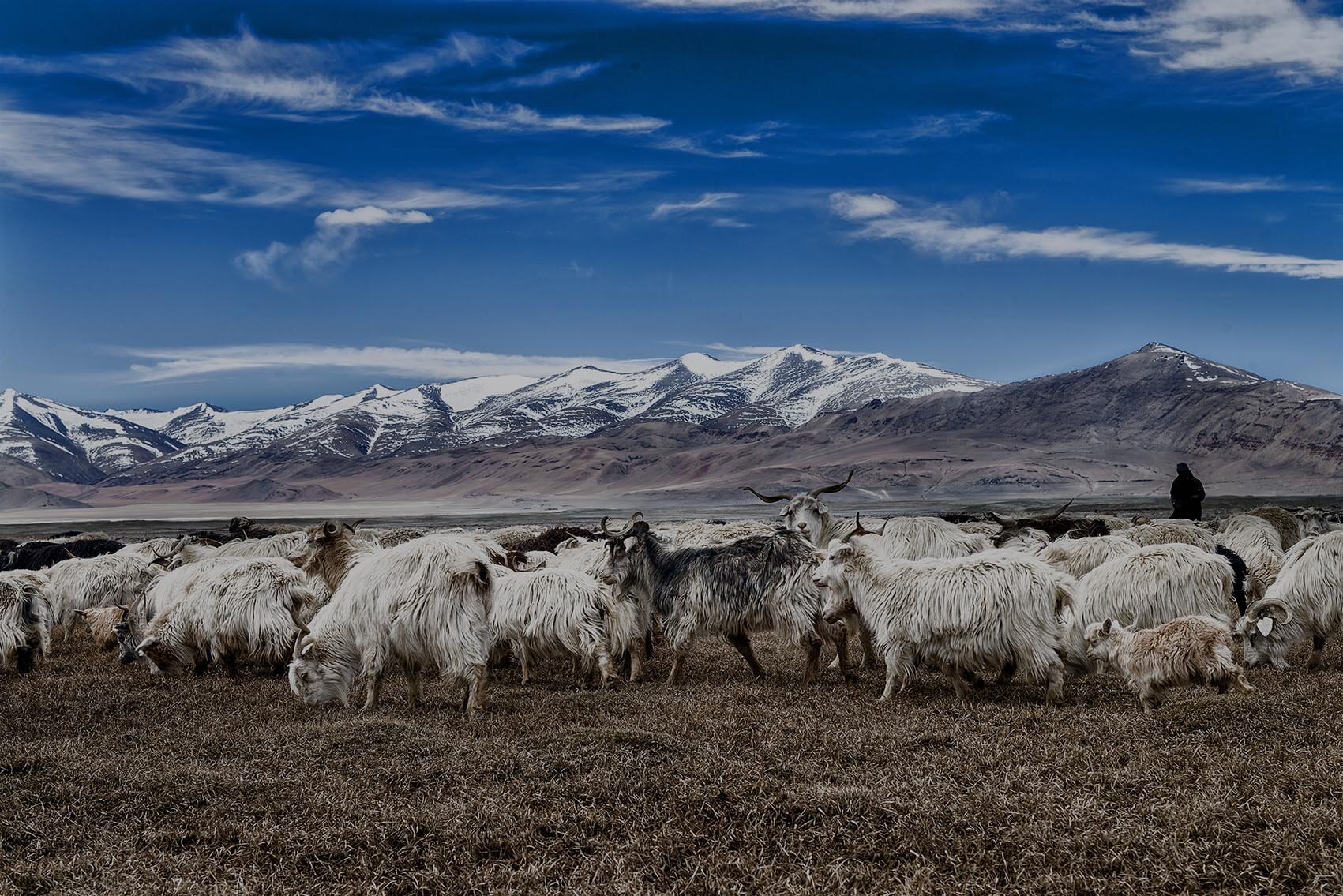
Become an expert on Cashmere
“CASHMERE”, the questions that we are often asked …
But where does cashmere come from ?
Cashmere comes from the heart of the Himalayas, specifically from the Changthang région in Ladakh, home to the changra goats and their nomadic shepherds. Situated at an altitude between 4000 and 7000 meters above sea level, these goats produce an exceptionally warm & soft undercoat beneath their coarse guard hairs. This layer protects them from harsh winds and extreme climate. This fibre is called cashmere and Ladakh, the historial land of this fibre.
So why the name of another Indian state ?
Kashmir is also the name of a neighboring state of Ladakh. This region is historically renowned for their shawls, the famous pashmina, and the skill of their weavers. The British, during the colonial period, developed the trade of this shawl and thus exported the name to the west.
Why is cashmere so exceptional and rare ?
The production of cashmere is limited by a natural cycle that relies heavily on environmental and climatic factors, contributing to its rarity. This unique fiber comes from the inner layer of the changra goat, which is primarily produced during the harsh winter months when temperatures drop below -30°C. This harsh climate gives the fiber its unparalleled softness and finesse.
In summer, during the molting season, nomads carefully comb their goats to collect this precious fiber. Each goat yields only about 200 to 300 grams of cashmere per year, which is barely sufficient to make a single shawl.
Furthermore, the demanding nomadic lifestyle has deterred younger generations from continuing the tradition, further intensifying the scarcity of this valuable raw material.
If it’s so rare, why are there so much of cashmere in the market ?
The confusion arises largely due to a lack of stringent regulations and awareness. Verifying the origin of cashmere is challenging because the trade often involves numerous intermediaries. Additionally, some unscrupulous businesses mislabel lower-quality fibers as cashmere or pashmina.
Lehvallée's strength lies in our ability to control the entire production process, from raw material to finished product, without any external interference.
And here's a little anecdote: did you know that our shepherds sing to their goats while combing and collecting the fiber? It’s a calming ritual, and perhaps a way to show their affection for the animals.
Want to know more ?
Rendez-vous on our insta page or go to our mag here




